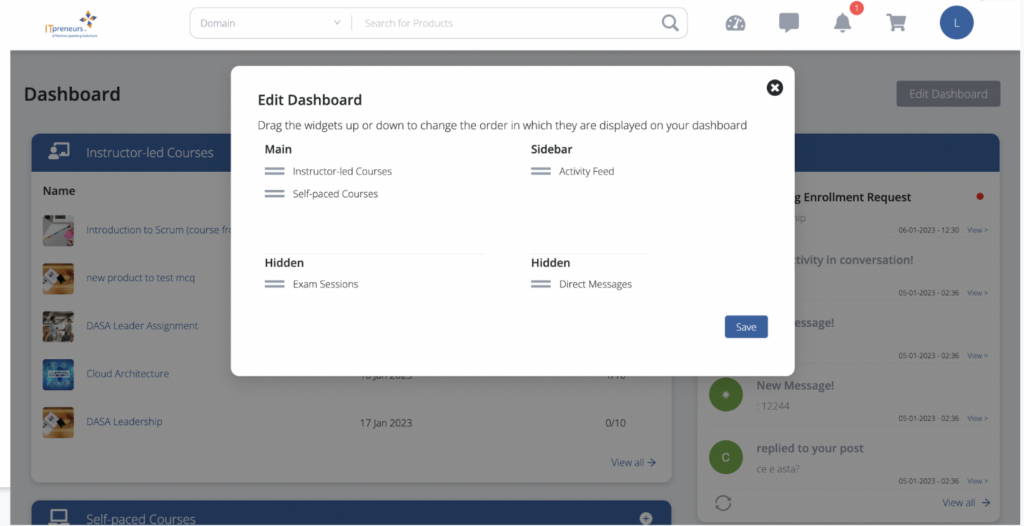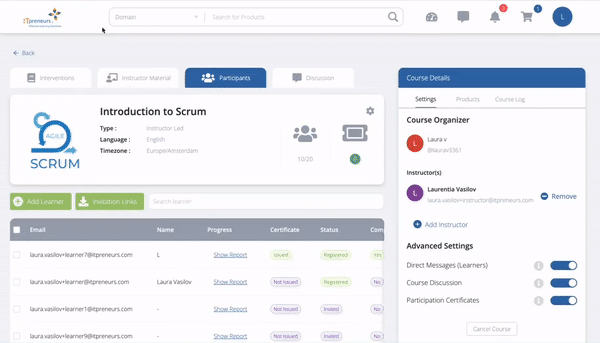ITpreneurs and partner, Rightstar Systems, organized a demonstration of the Apollo 13 – An ITSM Case experience™ business simulation to a team comprised of Certified instructors, Consultants, and ITIL client practitioners. The aim of the session was to explore what a simulation is, what it can do and its value as part of an ITIL® training or implementation initiative. The findings and conclusions were 100% unanimous. What they were, I’ll tell you shortly.
At the start of the session, the delegates were asked what they expected and what their preconceived ideas were about simulations. Only one had done a simulation game before, the rest were more or less here out of curiosity.
And, all had ITIL certificates ranging from ITIL Foundation through a number of Intermediate levels; and three ITIL experts.
What Is a Simulation?
A Business Simulation game is a form of experiential learning or learning-by-doing. People from different departments, representing the complete end-to-end service delivery chain, can be brought together in one room to participate in a game environment. People can play different roles in their normal daily role, for example, the CIO or second-level support managers can be put at the help desk in the game. This allows people to understand each other’s roles and information needs much better. People learn, in a number of game rounds, to translate theory into practice. They learn how to use the theory to achieve measurable results. They have to work together as a team, solve problems together, discuss and give each other feedback. In the game environment incidents, calls, changes arise, capacity issues occur, events are generated. The team is faced with increasing workloads and demands from the business. Can their processes cope? Can they successfully resolve the issues, manage the changes and realize their SLA targets? Can they demonstrate customer and business-focused behavior?
At the start of the simulation, in my role as Mission Director, I set the scene, So we have literally tens of thousands of dollars of my IT budget represented in the ITIL theory in your heads. I expect great things today. Demonstrate, you can apply it to realize my mission objectives!.
The team set about designing their processes, which we then tested in the first round of the simulation.
At the end of the game round, the team had created, in their words, chaos, confusion, frustration, stress, lack of control
, and dissatisfied customers through lack of engagement, prioritization, information and understanding or achievement of agreements.
Congratulations
said the Mission Director, So this is what my massive budget investment in ITIL certification has delivered to my business!?
The team then learned the critical success factors and fundamental “essentials” of making ITIL work. If you want to know what these are, go and play a simulation!! This lesson took 30 minutes. The team then designed their processes and added a new process “Change management”. In the next round, not only would they have to support the astronauts, but they would also have to manage changes, dealing with resourcing conflicts and prioritization issues. At the end of the next round, after applying ITIL success factors, they had achieved their SLA; the customer was satisfied and the team had an altogether different perception, “smoother, more ownership, more pro-active, people sticking to roles, more insight and control, more customer engagement”. It was time to evaluate and capture some practical takeaways.
What new knowledge did you gain today that you hadn’t learned or internalized in ITIL training, that you will now take away and apply or do differently as a result of this experiential learning?
People:
- Design and AGREE on roles, responsibilities and AUTHORITY together with representatives from the end-to-end chain.
- Engage with and gain management commitment and ensure explicit or implicit AUTHORITY for process managers.
- Engage with the Customers and Users to understand THEIR real needs for Value, Outcomes, Costs, Risks.
- Identify what people NEED to do their job role and responsibilities, what is expected from them and train them accordingly.
- Managers must play a coaching role and confront people when people do not stick to agreements, agreed procedures are circumvented and tools are not updated.
Process:
- Design processes together “collaboratively”.
- Process design is NOT a one time action. It is an iterative process. ITIL is simply a CSI (Continual Service Improvement) approach. Make incremental improvements to processes based upon the organizations maturity, readiness for change and abilities.
- How to use the CSI register to capture and prioritize improvements from the teams themselves, and match these to customer satisfaction and needs.
- Focus on ensuring the process can deliver measurable results and value—know the KPIs that demonstrate that the process is delivering value.
Product:
- Design the product together with those responsible for using it. Ensuring that the data and communication to support “management & Control, decision making, prioritization & escalation, and knowledge sharing” is embedded in the tool and the responsibilities for ensuring accuracy, completeness and integrity.
- Ensure that the tool is fit for use and fit for purpose to the people, the process and is aligned with partner capabilities.
Partner:
- Engage with and align processes and agreements (Underpinning) with all suppliers and partners. Ensuring also that partner tasks, roles, responsibilities, authority and decision making it aligned to ensure service agreements can be achieved.
Performance:
- Ensure all staff know why the organizations are “doing ITIL” and how each person contributes to delivering value, reducing costs or mitigating business risks.
This Is a No-Brainer!
We closed the session with the following observation and question: Many organizations don’t use simulations as part of ITIL training. Just give me the certificate they say, we don’t have the time or the budget for simulations. A simulation is just seen as a nice-to-have addition to make the training more fun or raise awareness. Should a simulation be a mandatory part of ITIL training?
The answer was 100% affirmative. As one delegate said, This is a no-brainer. This focuses on the essentials of getting ITIL to work, translating the knowledge into practice, which is what it is all about.
The New Joint venture owners of ITIL, now known as Axelos, stated when they began, We recognize that there has been a significant shift in the way in which people learn over the last decade. While there is still a place for traditional methods, practitioners in the 21st century demand the ability to learn at the time, place and style of their choosing. Increasingly, we see a shift from ‘learning by listening’ to ‘learning by doing’, underpinned by the increase in modular approaches to learning, plus simulations and other experiential learning techniques.
I think we can clearly state that this demonstration event confirms the Axelos observations.
About the author

Paul Wilkinson has been involved in the IT industry for more than 35 years, with a broad background in IT operations, IT management and product innovation and development. I was a project team lead in the original BITE (Business & IT Excellence) process modeling of ITIL, an ITIL V2 author and a member of the ITIL V3 advisory group.
Currently, he is the co-owner of GamingWorks, a company that develops and deploys a range of business simulations focusing on IT Service Management, Project Management, Business & IT alignment and DevOps. These simulations are offered through their ever-expanding global network of partner organizations. He was also co-author and developer of the ABC of ICT products and publications.



